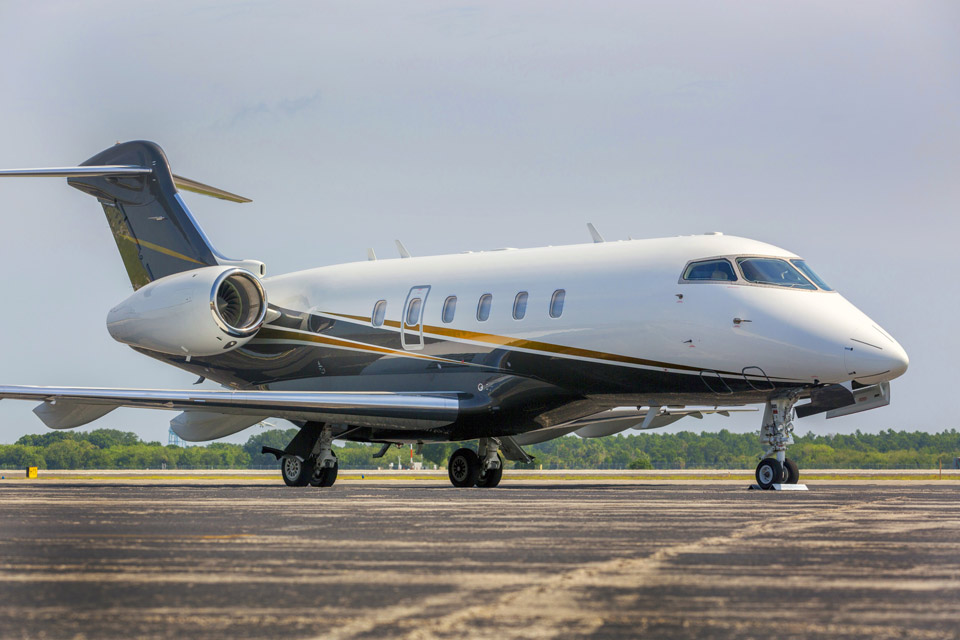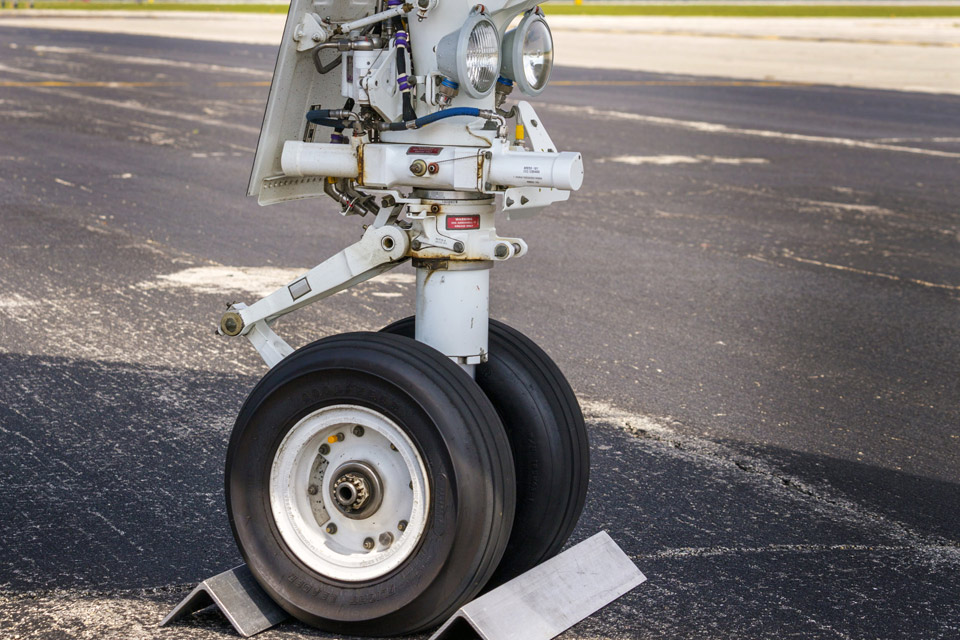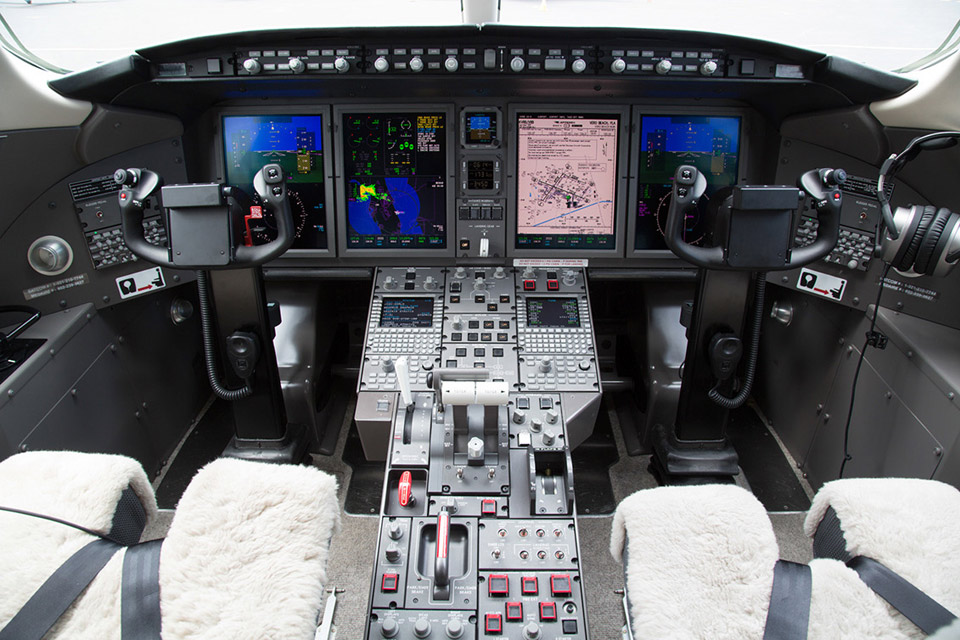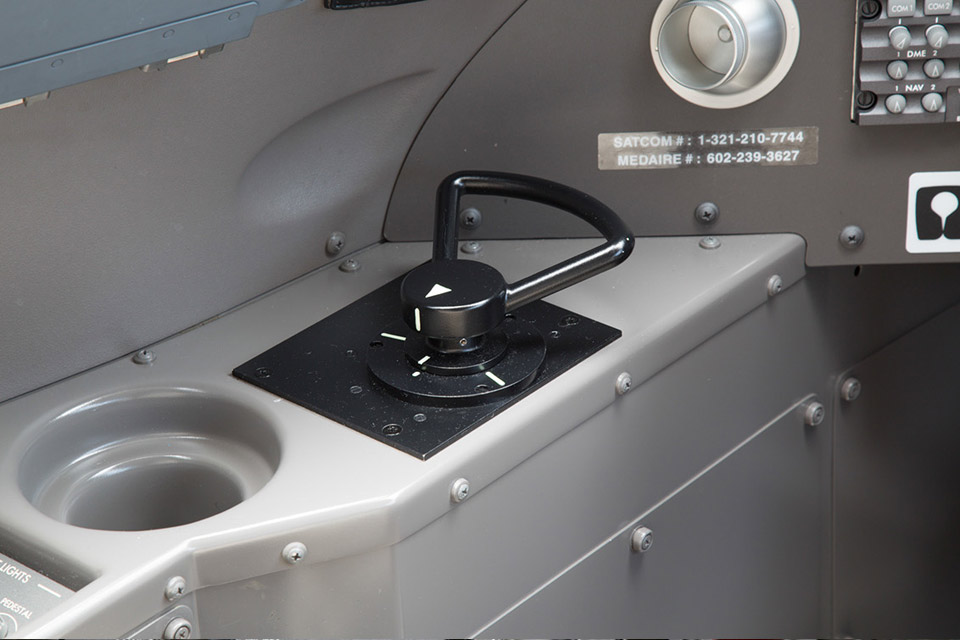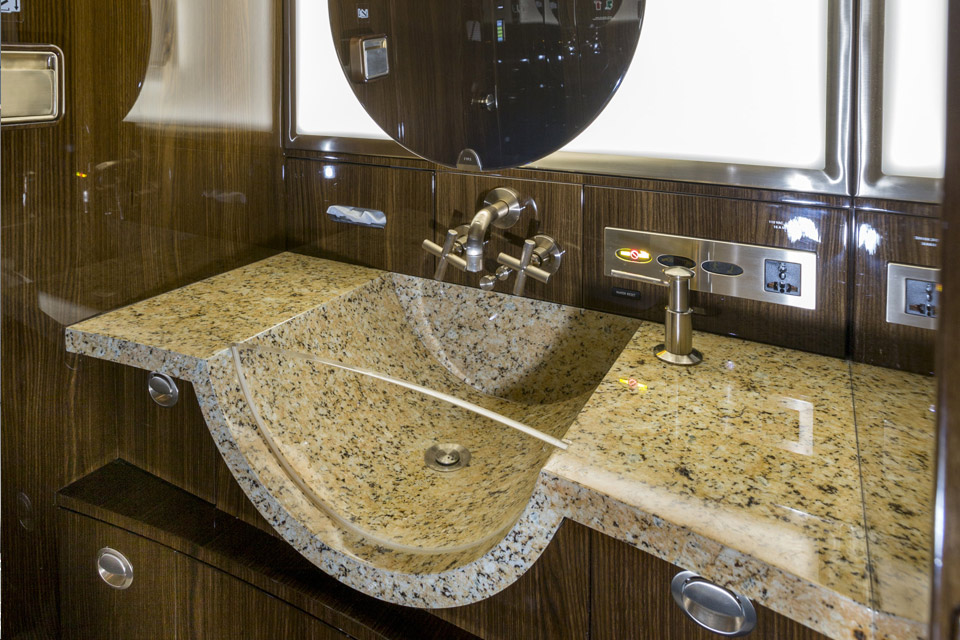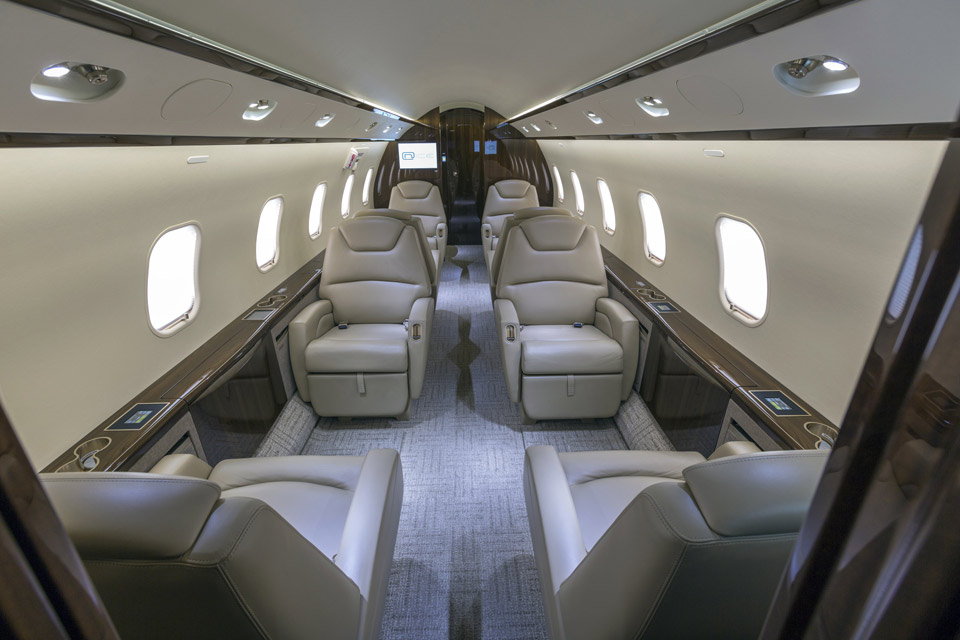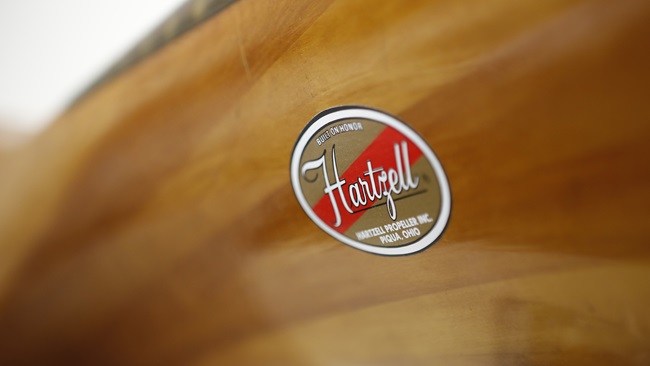For longtime owner-pilots of light jets, the step from the largest jet that can be flown single-pilot to an aircraft that requires a two-pilot crew often seems insurmountable. Unless blessed with a spouse or partner who is also a pilot, sacrificing the freedom of single-pilot operations and arranging a professional co-pilot for all flights may seem like too much hassle to justify the larger airplane. Yet a small number of owner-pilots—whether because of a natural preference for the potential extra safety a two-pilot crew affords, or simply from a pressing need for more payload and range capability—become comfortable enough with the idea of operating a two-pilot aircraft to make the leap. Doing so, they enter a world of comfort and operational flexibility vastly greater than what could be provided by even the largest of light jets.
The Bombardier Challenger 300 presents an attractive lure to the would-be midsize jet operator. Recently replaced in production by the slightly heavier Challenger 350, a decade of production means used models are available at prices less than one would pay for a new version of the largest light jets. With range more than 50 percent greater than that provided by an Embraer Phenom 300 or Cessna Citation CJ4, as well as considerably larger cabin dimensions and corresponding amenities, the Challenger 300 represents more of a leap up than a step up in capability.
An owner-pilot in the Northeast who made exactly this leap had found the capabilities of his “heavy” light jet were quickly surpassed by increased mission demands. While his aircraft offered a published range of roughly 2,000 nm, westbound trips into winter winds or even eastbound trips with full or nearly full seats (and corresponding offloading of fuel) made a frequent 1,800-nm run to Utah impossible without a fuel stop. Following the Challenger on such a trip provides a peek into the world of mid-size jet operations.
The first glaring difference between operating the Challenger and a light jet is apparent even before the engines are started—preflighting and preparing the aircraft for flight is a much more involved and lengthy process. Much of what makes the Challenger so comfortable on transcontinental flights are myriad creature comforts lacking on smaller aircraft: hot and cold running water in the lavatory; coffee and hot water jugs; even an espresso machine. Each of these features requires attention prior to a long flight, and 30 minutes can easily be spent refilling various potable water vessels, overseeing lavatory service, and stocking the ample galley—all before any inspections related to airworthiness have even begun.
The external walk-around is no more detailed than would be used for a typical light jet, but the greater size of the aircraft means there’s simply more space to cover, and more nooks and crannies to investigate. The “hellhole,” or external equipment bay, for example, is nearly ubiquitous on mid-size and large jets, yet not typically found on light aircraft. Likewise, internal cockpit setup doesn’t require much more detail than in a light jet, yet by the time all external and internal preparation for flight is done, an hour can easily have passed.
Starting the auxiliary power unit (APU) provides the first smile-inducing moment for a light-jet pilot. Waiting for departure time on a 100-degree ramp in Texas? Ten below zero with 20 knots of wind in upstate New York? No difference to the pilot—the copious bleed-air output of the APU will cool or warm the cabin nearly instantly, all the while powering the avionics in a fully ready state so departure can be affected as soon as the cabin door is closed. The availability of full electrical power from the APU means that once the engines are started, there’s very little left to do but taxi and depart—most avionics setup and systems tests are completed before engine start. Sub-5 minute times from engine start to takeoff roll are not uncommon at smaller fields.
And what a takeoff roll it is. With nearly 14,000 pounds of thrust, performing a static takeoff even at maximum gross weight produces a noticeable jolt on brake release. On our slightly sub-ISA day departing a sea-level New England airport, a takeoff weight of just more than 37,000 pounds gave us a runway requirement of only 4,360 feet and a rotation speed of 123 knots. With enough fuel to fly to Salt Lake City (SLC) into an 80-knot headwind, two pilots, eight passengers, and lots of skis and bags, we still were more than 1,500 pounds under maximum takeoff weight.
Assigned an initial level off at 2,000 feet underneath the Boston Class Bravo airspace, power is brought back significantly to maintain speed under 200 knots. Once climbing through the Bravo, a standard climb profile of 250 knots to 10,000 feet, then 290 knots is resumed. Around 30,000 feet the climb profile switches to Mach, and at lighter weights, it’s not uncommon to be climbing at M.82 while still doing more than 1,500 fpm through the mid 30s. Our heavier weight to Salt Lake City, though, necessitated a climb speed of “only” M.78, which propelled us directly to 43,000 feet without need for intermediate level-offs.
At ISA+5 and cruise thrust, we settled into cruise at M.80. Over the next two hours as fuel was burned off, the 300 accelerated to redline of M.83 (nearly 480 KTAS), ultimately requiring power reduction below cruise thrust so as not to overspeed—a nice problem to have.
It’s once the airplane settles into cruise that the creature comforts provided become most appreciated. A 6-foot, 1-inch flat-floor cabin makes stretching the legs a comfortable—not hunched-over—process. Further, being able to make hot coffee on demand, microwave breakfast, and wash your hands with hot water may not feel particularly luxurious when performing them in a home or office setting, but accomplishing said acts at 45,000 feet seems downright decadent to a longtime light-jet pilot.
The ability to comfortably take care of pilots’ and passengers’ physiological needs is critical to safely conducting the seven-plus-hour flights the Challenger can complete. Six hours in the Challenger passes quickly and comfortably. On this trip we wouldn’t be testing the endurance of the aircraft—even given the stiff headwind, a mere 4:41 was required from brake release to touchdown, burning just under 9,200 pounds of fuel.
On approach, the hydraulically powered elevator and roll spoilers (which supplement purely mechanical ailerons) provide a near-perfect combination of light control force and rock-solid stability. Further, for being such a fast aircraft, the Challenger is trivial to slow in the descent and approach. The sophisticated VNAV function of the Collins FMS, combined with capable speed brakes and a high gear extension speed of 250 KIAS, means no pilot need ever be caught in a high-energy state.
Give the trailing link gear a stabilized approach followed by idle thrust at the automated 50-foot radar altimeter call-out, and it will give back a pilot -and passenger-pleasing touchdown nearly every time. Pulling into the FBO at Salt Lake City, a last feature of the Challenger is appreciated—the tiller-commanded nosewheel steering. Squeezing between a Gulfstream and Falcon on a ski-season packed ramp, the Challenger is nimble to park, with a wheel-to-wheel and wing-tip-to-wing-tip turn radius smaller than that of some jets half its weight. In fact, my biggest problem parking it is typically underestimating how sharply it can pivot.
It’s difficult to imagine an aircraft that better strikes a balance between the accessibility and efficiency of a light jet and the range and cabin comfort of the heaviest iron. Indeed, most of the largest cabin business jets feature only an inch or two more headroom, and perhaps a foot more cabin width. Yet they cost two to three times as much to acquire and operate, while delivering no appreciable speed benefit on typical domestic legs. For those ready to make the leap, the Challenger 300 is a wonderful gateway into the world of heavy iron.
Neil Singer is a Master CFI with more than 8,500 hours in 15 years of flying.
SPEC SHEET
Challenger 300
Average equipped price: $18.5 million
Specifications
Engines | (2) Honeywell HTF7000, 6,826 lbs thrust ea
Length | 68 ft 8 in
Height | 20 ft
Wingspan | 63 ft 10 in
Cabin length | 23 ft 8 in
Cabin width | 7 ft 2 in
Cabin height | 6 ft 1 in
Max ramp weight | 39,000 lb
Max takeoff weight | 38,850 lb
Zero fuel weight | 27,200 lb
Max landing weight | 33,750 lb
Fuel capacity | 14,150 lb/2,112 gals
Baggage capacity, aft | 750 lb, 106 cu ft
Performance
Balanced field length, SL @ 15 deg C/ 59 deg F | 4,810 ft
Balanced field length, 5,000 ft @ 25 deg C / 77 deg F | 7,000 ft
Max cruise: ISA, FL450, 34,000 lbs, 1,644 pph/245 gph | 457 KTAS
Range w/NBAA IFR fuel reserves | 3,100 nm
Max operating altitude | 45,000 ft
Limiting and recommended airspeeds
VFE (max flap extended, flaps 10, 20, 30) | 210/210/175 KIAS
VLE (max gear extended) | 250 KIAS
VLO (max gear operating)
Extend | 250 KIAS
Retract | 200 KIAS
VMO (max operating speed) | 320 KIAS
MMO (max Mach number) | 0.83 M
VREF (approach speed, MLW) | 124 KIAS
Extra
VREF at light weight is as low as 113 knots.
For more information
Bombardier Business Aircraft, 400 Cote-Vertu Road West, Dorval, Quebec, Canada H4S 1Y9; 514-855-5001; http://businessaircraft.bombardier.com
All specifications are based on manufacturer’s calculations.

